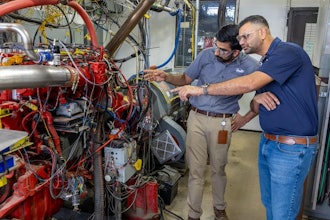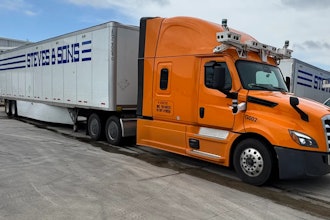
Artificial intelligence has captured the attention of design engineers and other experts who are central to finding enhancements for the products and infrastructure of everyday life. AI has allowed material scientists to benefit from advancements in hardness testing, shortened development time frames and other improvements. Why do many of these professionals view the technology as critical to their work?
Achieving Advancements in Hardness Testing With Deep Learning
Hardness tests show material scientists how well specific materials or components withstand attempts to permanently alter their surfaces. Some common approaches involve pressing a pointed instrument into a material or evaluating how well it resists scratching. However, some researchers have explored whether AI might enable advancements in hardness testing. If it provided faster or more accurate results, material scientists would likely use it instead of traditional options.
In one example, a group trained a deep-learning neural network to identify the structural features that most contribute to hardness. They focused on bio-inspired projects engineered by humans but featuring many natural characteristics. The researchers were particularly interested in tooth enamel because it is the hardest biological tissue in humans. Their work indicated that AI models could improve hardness testing by enabling rapid, nondestructive methods.
Additionally, they combined their deep-learning model with another algorithm. These tools proposed bio-inspired structures that met precise hardness requirements when used together. The researchers also mentioned many downsides of traditional hardness tests, including damaging the material and requiring people to space the deformations far enough apart to maintain accuracy without artifacts. Testers’ varying skill levels and subjectiveness within observers can make the outcomes inconsistent, too.
These issues become even more apparent when people increase testing output. Although machine learning does not replace human input, it can allow material scientists to get faster, more accurate results. The researchers combined three datasets into one with 22,730 labeled images, using it to train a model to map hardness levels across tooth enamel. Humans then applied their domain expertise while interpreting the results, which showed predicted hardness levels and the factors affecting them. Such results bring advancements in hardness testing that could affect entire industries.
Reducing Testing Equipment Downtime
The laboratories used by material scientists include numerous specialty machines that significantly disrupt workflows when they become unusable. These issues also create costly ripple effects. Inaccurate results halt workflows and adversely affect quality control, but proper maintenance extends equipment life while ensuring consistent results.
Additionally, inadequately maintained testing equipment can become safety hazards for operators, while worn parts could damage the examined materials. Testing equipment manufacturers create machines to last for years when users care for them as recommended. However, detecting problems is not always easy, especially since many issues start small and become more evident until people cannot help but notice them.
Artificial intelligence addresses that challenge through connected sensors and algorithms that track equipment functionality in real time and flag abnormalities. This approach can identify problems sooner than alternatives such as preventive maintenance, where technicians perform recommended actions based on time frames or other usage-related parameters.
Predictive maintenance is more expensive and technically involved than other approaches. However, those using it often realize it more than pays for itself over time by eliminating or significantly reducing equipment outages that interfere with testing timelines. Material scientists especially appreciate the increased uptime if they work in busy labs with numerous high-volume clients. Disruptions can be particularly severe in those settings and cause lasting reputational damage.
Some algorithms can also detect the factors that have caused equipment to need new parts or maintenance sooner than expected. If managers determine that operator error is partly to blame, they can schedule individual coaching, updated training or other interventions to help people develop better habits.
Extending Material Longevity in Real-World Cases
Material scientists may rely on AI to extend how long their products work once deployed. One project used predictive analytics that way to optimize satellites. Researchers started with hundreds of parameters and chose the most informative for their model. Two anomaly algorithms assessed the likelihood of issues happening on particular days and the possible severity levels.
The predictive analytics also assessed a satellite’s remaining useful life and overall condition. Other examined factors could prove especially useful to material scientists eager to build better satellites that can tolerate environmental rigors longer than their conventional counterparts. For example, these algorithms sensed weather conditions and additional parameters that could impact performance.
Although the researchers’ earliest models relied on historical data, they noted that later versions could include real-time information from a user-facing dashboard. They designed an artificial intelligence-powered one that showed weather parameters, current conditions and forecasts and allowed users to search for information about specific satellites.
In another example, a civil engineer has applied AI to find suitable materials for durable, sustainable infrastructure. One investigation involved testing various AI algorithms to assess their predictive capabilities about how well asphalt pavements with reclaimed materials tolerate moisture. He was especially interested in moisture damage, citing it as one of the most critical issues, particularly in wet, cold environments.
Water seeping into asphalt can sever the material bonds. Once that action weakens the material, it is more likely to crack or otherwise need repairs. However, when AI algorithms show which asphalt mixes are most durable in realistic conditions, that information can shape material scientists’ future work, revealing which possibilities deserve more attention while eliminating the unfeasible ones.
Supporting Material Scientists’ Important Work
These examples may have encouraged you to begin incorporating AI into your workflow. If so, recognize that the best results occur when people take the time to identify the pain points the technology could solve or the goals it will allow users to meet.
Whether the goal is to pursue advancements in hardness testing to reduce reliance on destructive and variable methods or to use algorithms to prevent downtime in critical testing equipment, these are two of the many accessible options. Identifying clear and applicable use cases prevents engineers and other professionals from merely using artificial intelligence for the sake of it.
Material scientists should also realize that determining the most effective ways to use AI may take significant time, especially if their projects require building custom algorithms. However, efforts made now could save time and money over time while revealing superior possibilities to address emerging challenges.























